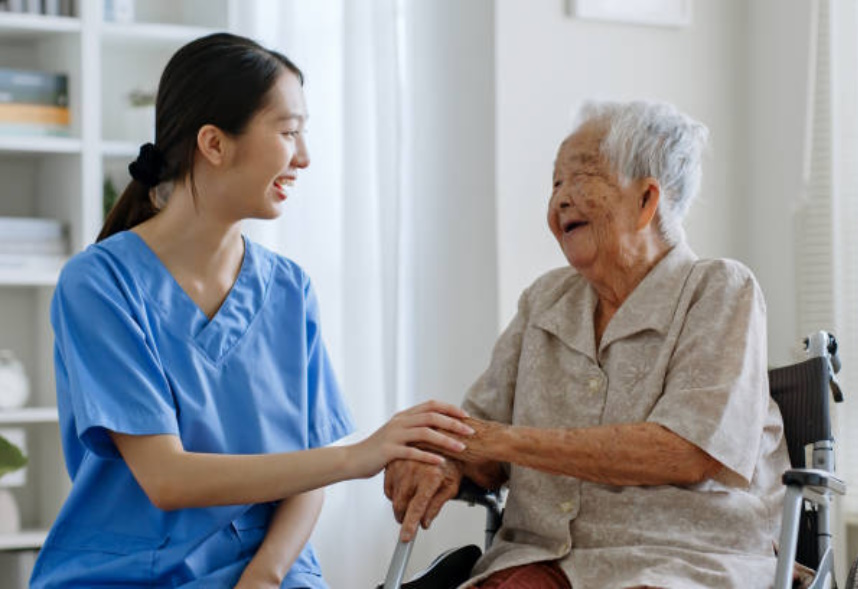Aging in Place: A Comprehensive Guide to Safe and Accessible Living

Aging in place refers to the ability of older adults to live in their own homes safely, independently, and comfortably, regardless of age, income, or ability level. As the population ages, more people seek ways to stay in their homes for as long as possible. This blog will explore how to make your home safe and accessible, the resources available to support aging in place, and the associated costs.
Making Your Home Safe and Accessible
Creating a safe and accessible home environment is crucial for aging in place. Here are key areas to focus on:
- Home Modifications:
- Entrances and Exits: Install ramps, handrails, and non-slip surfaces. Consider an electronic door entry system for ease of access.
- Bathrooms: Add grab bars, non-slip mats, walk-in showers, and elevated toilet seats to prevent falls and make daily tasks easier.
- Kitchens: Ensure countertops and storage are within reach. Use pull-out shelves, lever-style faucets, and automatic shut-off appliances to enhance safety.
- Lighting: Improve lighting throughout the home, especially in stairways, hallways, and entry points. Use motion-sensor lights to prevent accidents.
- Stairways: Install stairlifts or home elevators if necessary. Ensure stairways have sturdy handrails on both sides.
- Technology and Smart Home Devices:
- Medical Alert Systems: Wearable devices that can call for help in an emergency.
- Smart Home Systems: Use voice-activated assistants (like Amazon Alexa or Google Assistant) to control lights, thermostats, and security systems.
- Monitoring Systems: Cameras and sensors can monitor movement and alert caregivers if help is needed.
- Furniture and Layout:
- Arrange furniture to create clear pathways and reduce tripping hazards.
- Use chairs with arms and firm cushions to provide better support when sitting or standing.
Resources for Aging in Place
Numerous resources are available to help older adults and their families plan for aging in place:
- Government Programs:
- Medicare and Medicaid: These programs may cover some in-home healthcare services costs.
- Department of Veterans Affairs (VA): Offers benefits and services to help veterans age in place, including home modification grants.
- Nonprofit Organizations:
- AARP: Provides resources, guides, and advocacy for aging in place.
- National Aging in Place Council (NAIPC): Offers a network of professionals specializing in home modifications, caregiving, and financial planning.
- Local Community Services:
- Area Agencies on Aging (AAA): These agencies offer information on local services, transportation, meal delivery, and in-home care.
- Senior Centers: Provide social activities, health programs, and support services.
- Professional Services:
- Certified Aging-in-Place Specialists (CAPS): Professionals trained to assess and modify homes to meet the needs of aging residents.
- Occupational Therapists: Can provide personalized recommendations for home modifications and adaptive equipment.
Costs of Aging in Place
The costs associated with aging in place can vary widely depending on the level of modification and care needed. Here is a breakdown of potential expenses:
- Home Modifications:
- Minor Modifications: Installing grab bars, adding lighting, or rearranging furniture can range from $200 to $2,000.
- Major Modifications: Installing ramps, stairlifts, or remodeling bathrooms and kitchens can cost between $10,000 and $50,000.
- Technology and Devices:
- Medical Alert Systems: Typically range from $20 to $50 per month, with additional costs for equipment.
- Smart Home Devices: Costs vary widely; for example, a smart thermostat might cost $150-$250, while a comprehensive smart home system could run several thousand dollars.
- In-Home Care Services:
- HourlyCare: Home health and personal care aides typically charge $28-$40 per hour.
- Full-Time Care: Around-the-clock care can cost between $15,000 and $25,000 per month, depending on location and level of care required.
- Financial Assistance:
- Grants and Loans: Programs like the VA’s Specially Adapted Housing (SAH) grants or USDA Rural Development loans can help offset costs.
- Private financing, including long-term care insurance, reverse mortgages, specific life insurance policies, annuities, and trusts.
Aging in place is expensive and requires thoughtful planning. However, it provides the comfort and familiarity of home while maintaining independence and enhancing quality of life. By making your home safe and accessible, utilizing available resources, and understanding the associated costs, you can gracefully create a supportive environment for aging. Planning and leveraging community and professional resources, such as those offered by Evergreen Nursing Health, can make the process smoother and more manageable. This approach ensures you or your loved ones can enjoy the golden years with confidence and peace of mind.
Are you looking to secure either of these services? Schedule a free consultation with our expert nurses today!

Aging in Place: A Comprehensive Guide to Safe and Accessible Living

Aging in place refers to the ability of older adults to live in their own homes safely, independently, and comfortably, regardless of age, income, or ability level. As the population ages, more people seek ways to stay in their homes for as long as possible. This blog will explore how to make your home safe and accessible, the resources available to support aging in place, and the associated costs.
Making Your Home Safe and Accessible
Creating a safe and accessible home environment is crucial for aging in place. Here are key areas to focus on:
- Home Modifications:
- Entrances and Exits: Install ramps, handrails, and non-slip surfaces. Consider an electronic door entry system for ease of access.
- Bathrooms: Add grab bars, non-slip mats, walk-in showers, and elevated toilet seats to prevent falls and make daily tasks easier.
- Kitchens: Ensure countertops and storage are within reach. Use pull-out shelves, lever-style faucets, and automatic shut-off appliances to enhance safety.
- Lighting: Improve lighting throughout the home, especially in stairways, hallways, and entry points. Use motion-sensor lights to prevent accidents.
- Stairways: Install stairlifts or home elevators if necessary. Ensure stairways have sturdy handrails on both sides.
- Technology and Smart Home Devices:
- Medical Alert Systems: Wearable devices that can call for help in an emergency.
- Smart Home Systems: Use voice-activated assistants (like Amazon Alexa or Google Assistant) to control lights, thermostats, and security systems.
- Monitoring Systems: Cameras and sensors can monitor movement and alert caregivers if help is needed.
- Furniture and Layout:
- Arrange furniture to create clear pathways and reduce tripping hazards.
- Use chairs with arms and firm cushions to provide better support when sitting or standing.
Resources for Aging in Place
Numerous resources are available to help older adults and their families plan for aging in place:
- Government Programs:
- Medicare and Medicaid: These programs may cover some in-home healthcare services costs.
- Department of Veterans Affairs (VA): Offers benefits and services to help veterans age in place, including home modification grants.
- Nonprofit Organizations:
- AARP: Provides resources, guides, and advocacy for aging in place.
- National Aging in Place Council (NAIPC): Offers a network of professionals specializing in home modifications, caregiving, and financial planning.
- Local Community Services:
- Area Agencies on Aging (AAA): These agencies offer information on local services, transportation, meal delivery, and in-home care.
- Senior Centers: Provide social activities, health programs, and support services.
- Professional Services:
- Certified Aging-in-Place Specialists (CAPS): Professionals trained to assess and modify homes to meet the needs of aging residents.
- Occupational Therapists: Can provide personalized recommendations for home modifications and adaptive equipment.
Costs of Aging in Place
The costs associated with aging in place can vary widely depending on the level of modification and care needed. Here is a breakdown of potential expenses:
- Home Modifications:
- Minor Modifications: Installing grab bars, adding lighting, or rearranging furniture can range from $200 to $2,000.
- Major Modifications: Installing ramps, stairlifts, or remodeling bathrooms and kitchens can cost between $10,000 and $50,000.
- Technology and Devices:
- Medical Alert Systems: Typically range from $20 to $50 per month, with additional costs for equipment.
- Smart Home Devices: Costs vary widely; for example, a smart thermostat might cost $150-$250, while a comprehensive smart home system could run several thousand dollars.
- In-Home Care Services:
- HourlyCare: Home health and personal care aides typically charge $28-$40 per hour.
- Full-Time Care: Around-the-clock care can cost between $15,000 and $25,000 per month, depending on location and level of care required.
- Financial Assistance:
- Grants and Loans: Programs like the VA’s Specially Adapted Housing (SAH) grants or USDA Rural Development loans can help offset costs.
- Private financing, including long-term care insurance, reverse mortgages, specific life insurance policies, annuities, and trusts.
Aging in place is expensive and requires thoughtful planning. However, it provides the comfort and familiarity of home while maintaining independence and enhancing quality of life. By making your home safe and accessible, utilizing available resources, and understanding the associated costs, you can gracefully create a supportive environment for aging. Planning and leveraging community and professional resources, such as those offered by Evergreen Nursing Health, can make the process smoother and more manageable. This approach ensures you or your loved ones can enjoy the golden years with confidence and peace of mind.
Are you looking to secure either of these services? Schedule a free consultation with our expert nurses today!

